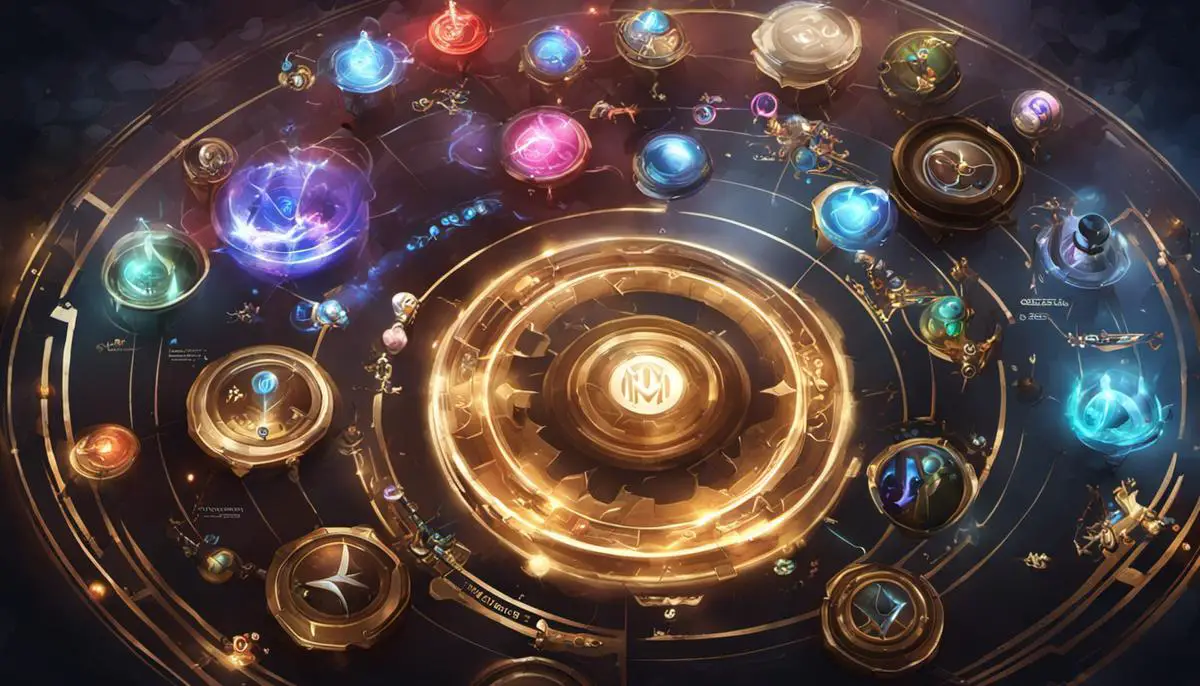League of Legends (LoL), one of the most popular Massive Online Battle Arenas (MOBAs) worldwide, relies heavily on a player’s Matchmaking Rating (MMR), a hidden score that helps ensure competitive and challenging matches for all involved. Understanding more about MMR, how it impacts gameplay, its history, and controversies associated with it, can help amplify your LoL playing experience. While Riot, the developer of the game, does not directly provide a way to check your MRM, several third-party websites and tools, such as OP.GG and Mobalytics, offer the chance to do so. Knowing about these tools, their accuracy, plus how to properly use them to check MMR, can serve as a valuable asset for the LoL community.
Understanding MMR in League of Legends
Understanding MMR in League of Legends
MMR, which stands for Matchmaking Rating, is an unseen statistic that League of Legends uses to match players of similar skill levels together in the game. Essentially, it’s a measurement of player skill based on win rates and it impacts which players you’re matched against in games. The higher your MMR, the more skilled (in theory) your opponents will be. Contrarily, a lower MMR indicates less skilled matchups.
Impact of MMR on Gameplay
Your MMR is a major factor in how much League Points (LP) you gain or lose after each match. Winning against players with a higher MMR than yours leads to more LP gain and less LP loss. But if you lose against players with lower MMR, you lose more LP and gain less when winning. In addition, your MMR also affects your progression through the ranked tiers in the game. High MMR can fast-track players to higher rankings, while those with declining MMR may find it challenging to progress.
The Purpose of the MMR System
The primary purpose of the MMR system is to provide balanced matchmaking in all of League’s queues. The system aims to pair players against opponents with similar skill levels for a more competitive and fair play. An important aspect to note is that each queue (Solo/Duo, Flex 5:5, and 3:3) has its own independent MMR.
MMR History and Changes
The creation of the MMR system essentially marked the end of the Elo system Riot Games initially used. However, MMR is often still referred to as “Elo” by players. The change was controversial as the developers shrouded MMR in secrecy, leading to many players feeling frustrated over not being able to accurately gauge their skill level. Recently, the developer introduced changes to improve transparency, allowing for a more visible relationship between your performance, your MMR, and your position in ranked tiers.
Checking Your MMR
Checking your MMR directly through the game client is currently not possible. However, third-party sites such as OP.GG and Mobalytics offer estimated MMR scores based on their algorithms. While these estimates provide a good baseline to understand your current MMR, they won’t give you the exact figure. Riot Games has not endorsed these tools either, so use them at your own discretion. The good news is Riot Games is working towards including a progress bar in your profile to shed some light on your MMR, at least in terms of your progress towards the next division.

Third-Party MMR Check Tools
Identifying Your MMR
MMR, or Matchmaking Rating, in League of Legends determines in which league you should play. Although Riot Games does not offer a built-in method to check your MMR, there are numerous third-party platforms where players can check their MMR. These platforms, however, don’t provide an exact number, they estimate MMR based on the data available.
OP.GG as MMR Estimator
OP.GG is one of the well-known and widely used third-party websites that offers an estimation of your MMR in LoL. After visiting the website, select your respective region, then type in your Summoner name (in-game name) in the search bar to access your profile. Towards the right-hand side, underneath the tier graphic and current LP, it offers an ‘MMR Check’. It’s worth bearing in mind that it doesn’t display a specific number; instead, it gives a broad range that represents your expected MMR based on your win-loss ratio.
Regarding the review of OP.GG, users appreciate the quick updates and its ease of use. However, some have pointed out that it isn’t always accurate, as it’s often based on your recent games, which may not reflect your actual skill level.
Mobalytics GPI Score
An alternative to OP.GG is Mobalytics. Unlike other tools, Mobalytics focuses on different aspects of your gameplay and arrives at a GPI (Gamer Performance Index) score rather than MMR. The GPI is a numerical value that considers factors like fighting, farming, vision, aggression, and more. By comparing your GPI with other players in your League tier, it gives an idea of your skill level.
To use Mobalytics, you’ll need to create an account and link it to your LoL account. From there, you can navigate to the GPI tab on your account dashboard to view your scores.
The feedback on Mobalytics is generally positive, with players appreciating the depth of analysis. However, some have noted that the GPI isn’t a perfect representation of MMR, as it factors in many different aspects of gameplay.
Considerations for MMR check
When looking to check your MMR, remember these tools estimate based on the data available. It’s best to use them for general guidance rather than a definitive view of your real skill level. Ideally, consistently improving your play and watching your League Points rise is the most foolproof way of tracking your progress in the game.
It’s also worth noting that these websites don’t get information as often as during each match. The frequency of their updates may vary, but typically, they refresh data every few hours or so. Individuals also have the option to manually ‘refresh’ or update their own stats on these platforms.

Step-by-Step Guide on using Third-Party Tools
Finding Your League of Legends MMR Using OP.GG
The first step to checking your MMR in League of Legends is to use a trusted third-party tool, such as OP.GG. Here are the steps you need to take:
- Launch your web browser and go to the OP.GG website.
- At the top of the page, you will find a search bar. Type in your League of Legends username and click the “Search” button.
- Once your profile pops up, locate and click on the “Check MMR” button, usually situated next to your Summoner Name.
- After clicking, OP.GG will run an algorithm to guess your MMR based on recent matches you’ve played.
Please note that OP.GG estimates your MMR and it might not be 100% accurate. The exact MMR algorithm used by League of Legends is not public, hence the estimated number could vary from the actual.
Checking Your MMR in League of Legends Using WhatIsMyMMR
Another useful tool you can use is “WhatIsMyMMR”. Here are the steps:
- Go to the WhatIsMyMMR website using your web browser.
- On the homepage, type your Summoner Name into the text field then select your region from the dropdown menu.
- Click on the “Look Up” button and wait for the site to process your request.
- Your estimated MMR for different game modes (such as Solo/Duo, Flex 5:5, and ARAM) will then be displayed.
Again, this is a third-party site interpreting Riot Games’ API data, so take your MMR results from WhatIsMyMMR with a grain of salt.
Tips and Disclaimers
While these third-party tools provide a handy way to check your MMR, they should be used with caution. The MMR that they provide is merely an estimation and may not always be accurate.
The MMR system in League of Legends is complex and the exact algorithm is not public. Each platform may interpret the data differently, leading to different results. Always remember that these are approximations and not the precise figure.
With respect to privacy, these sites do not access or store any personal details from your account. They only use public in-game data provided by Riot Games’ API to make an educated guess about your MMR.
Also, be aware of the certain risks associated with using third-party sites such as possible exposure to ads or potential malicious links. Always ensure that you’re using a trusted, secure connection and be cautious of what you click on while on these sites.

Ultimately, the unseen world of MMR has a considerable influence on your League of Legends experience. Being aware and educated about this system is beneficial for any player seeking to masters their skills and climb the ranks. Using third-party MMR check tools offers an estimation of your MMR to help you understand where you stand in relation to other players. Walking through specific steps and procedures can empower even a newbie player to navigate these tools adeptly. While it’s important to remember that these are estimates and not 100% precise, they still offer valuable insight into your MMR status. As a responsible player, it is also vital to be aware of issues related to data privacy when using these tools, ensuring a safe and fun gaming environment for all.
- Guide to Life Is Strange: True Colors Ch. 1 Choices - April 4, 2024
- Catching Spiritomb in Pokemon BDSP - April 4, 2024
- Mastering Life Is Strange: Key Choices in Chapter 1 - April 4, 2024
Views: 26









